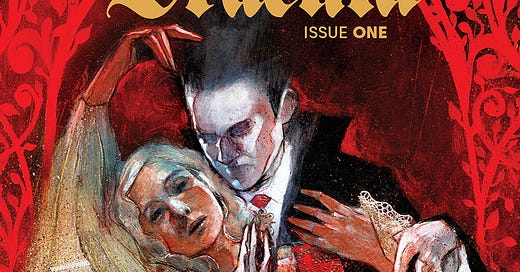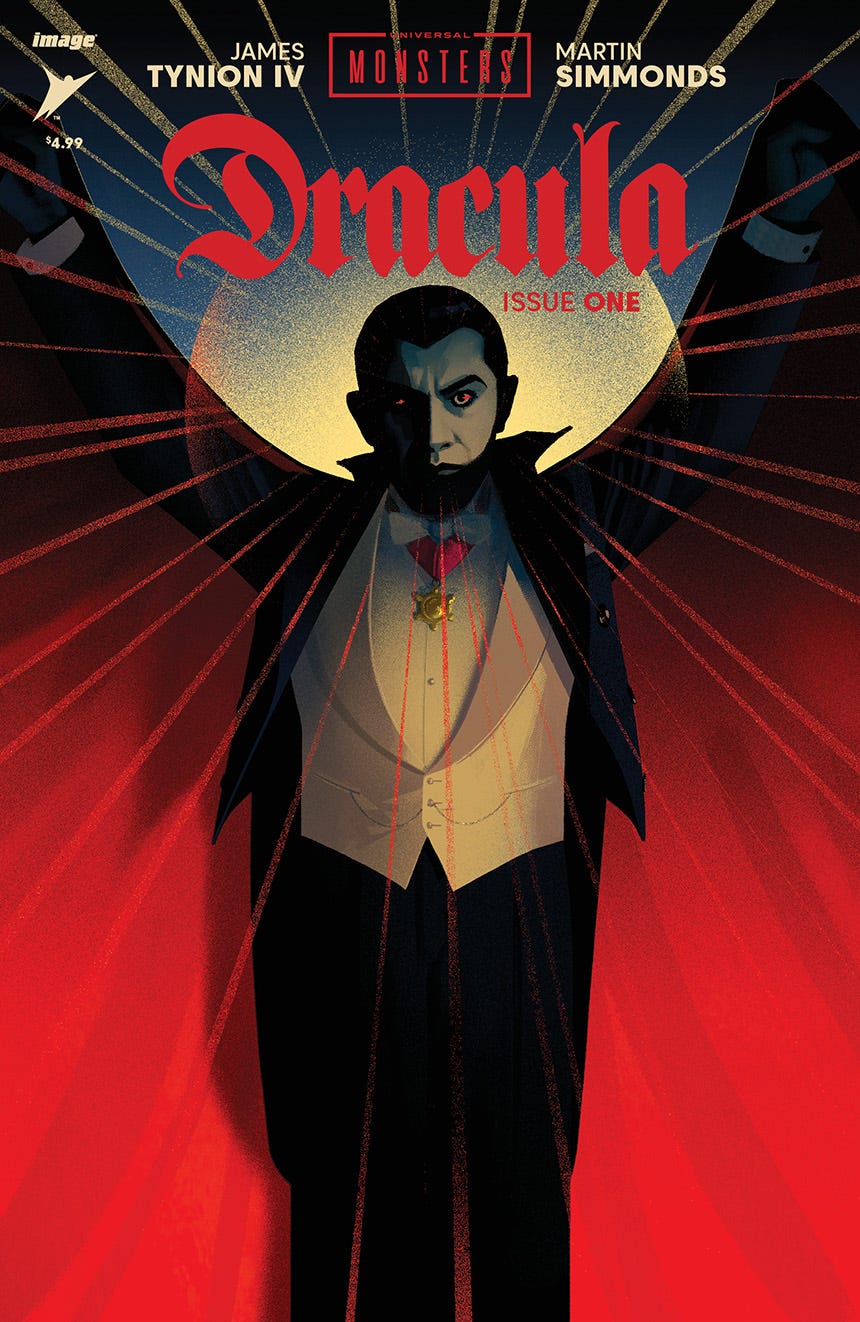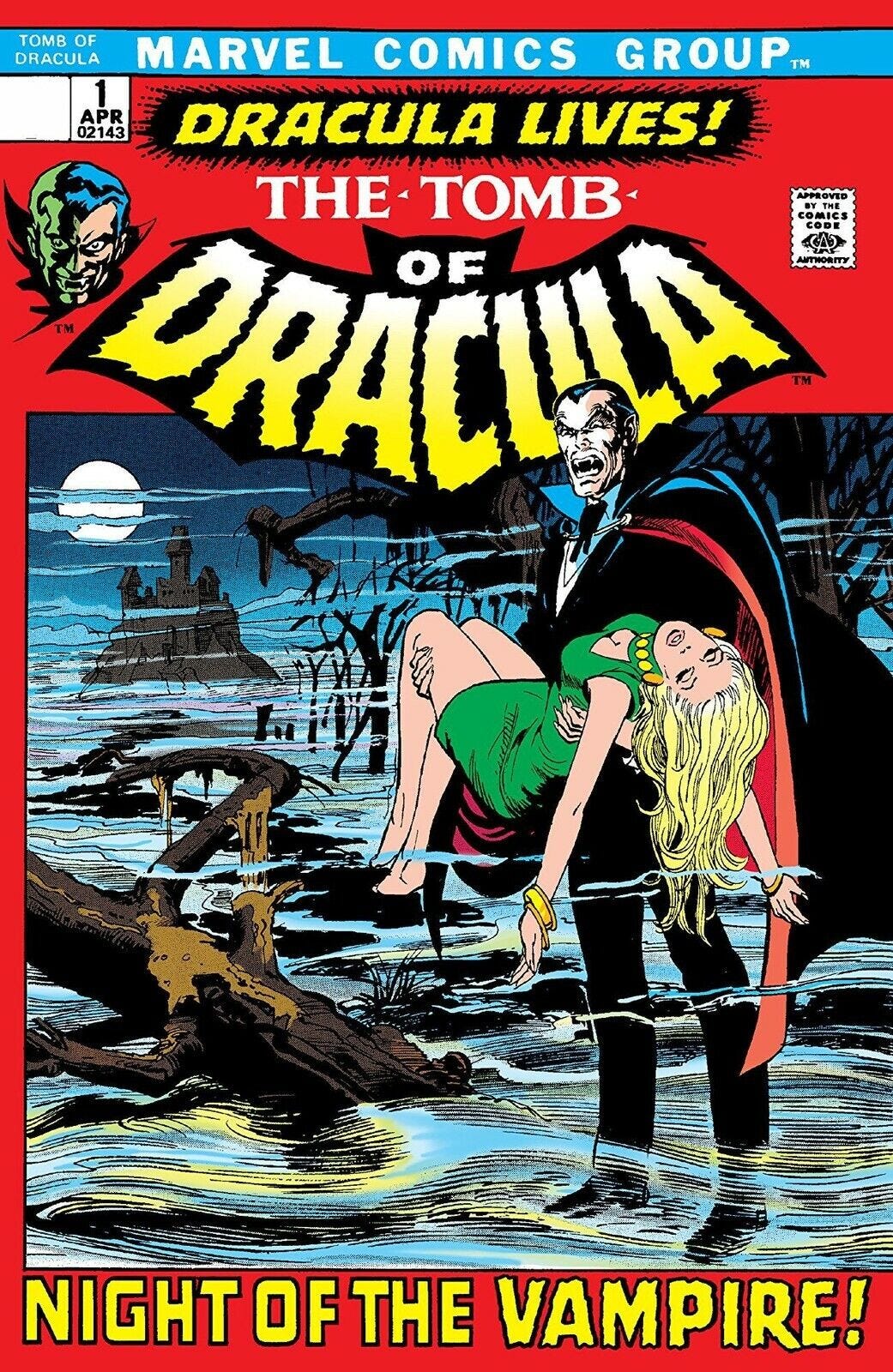Dracula to rise again in comics
Word Balloons #1172: Vampire legend has long history in comics, film
According to a news release from Skybound, the “Department of Truth” team is about to take on the world’s most famous vampire.
“Universal Monsters: Dracula,” a new four-issue comic book limited series from writer James Tynion IV and artist and Martin Simmonds is set for an October 25, 2023, release.
“A few times in my life I’ve had the pleasure of writing about one of the great pop culture icons, but there is something singular about Dracula that made this opportunity too good to pass up,” said James Tynion IV in the release. “The challenge in front of Martin and I is to take the bloody heart of the Universal Pictures classic and find a bold new way to bring the character to life. It’s been one of the most exciting creative challenges of my life, and I am phenomenally excited for you to see the horrors we have in store for you.”
Simmonds also said the classic vampire was one of his favorites.
“Dracula has always been a horror favorite of mine, so to get the chance to work on an exciting new interpretation of this character alongside my Department of Truth Co-creator, James Tynion IV, was one I couldn’t pass up,” said Martin Simmonds. “I’m so excited for readers to experience our version of Universal’s classic monster–and I hope you enjoy the direction we take the story.”
The 1897 novel “Dracula” by Bram Stoker popularized the vampire. The book's main character could have been partially based on former Transylvanian governor Vlad the Impaler.
Multiple motion pictures have made Dracula the world's most famous vampire. The 1931 film starring Lugosi is a horror classic that has been selected for preservation in the National Film Registry.
Dracula has lurked in comics many times through the decades.
“When you talk to people, it seems like Dracula is a lot of people's first boogeyman. Everyone knows the name, everyone knows the Universal Monsters look, and everyone knows the evil force that Dracula is,” said Dean Compton of theunspokendecade.com. “I like seeing Dracula in comic books, from everything like adaptations of the original novel to stuff like Curse of the Mutants. where the X-Men had to square off with vampires, among them, Dracula.”
Dell Comics had the license for the Universal Monsters back in 1962, and they created a comic for their Classic Movie series focusing on the vampire. While the Comics Code Authority banned most depictions of vampires at the time, Dell, using its position in the industry at the time as the purveyors of Disney and Little Lulu Comics, never signed onto the Comics Code, instead holding itself to its self-regulated "Pledge to Parents" that its comics wouldn't contain objectionable material.
Dell's first Dracula story took place in "Dell Movie Classics" #212 in 1962 based on the 1931 Universal film. Later, Dell lost the license. But they didn't give up on the idea of adapting the public domain inspirations for the Universal Monsters.
After losing the license to the Universal Monsters, Dell adapted the public domain characters Dracula and Frankenstein, and the not-quite-the Wolfman "Werewolf," into superhero characters that were fairly far-afield from their original incarnations.
In 1971, the Comics Code Authority relaxed some of the rules specifically banning supernatural horror. Marvel jumped on the trend, with characters like Morbius and the Living Vampire, and titles like "Tomb of Dracula."
The long-running "The Tomb of Dracula” series is most likely the most famous adaptation of Dracula in comics. Gene Colan was the artist for the series' entire run, beginning in 1972. Marv Wolfman took over as writer with issue No. 7 and stayed on through the series' conclusion in 1979. This Dracula wasn't officially licensed from Universal, but was instead based upon the public domain character from the novel.
“One of the things I like to point out to newer comic book fans is just how important Tomb of Dracula became to Marvel in the 1970s,” Compton said. “While it eventually petered out, it was such a strong seller at one point that Dracula was as ubiquitous as Hulk, Captain America, and Spider-Man when it came to promotional material! That seems wild to think about now, but it happened!”
This series introduced Blade the vampire hunter and is one of the longest-running horror series in Marvel Comics' history; it's been reprinted in a variety of formats, including six Gene Colan "Tomb of Dracula" stories that were presented in an oversize format showcasing the original art as part of IDW's Artist's Editions.
Dracula faces X-Men villain Apocalypse in "X-Men: Apocalypse/Dracula, a four-issue miniseries from Marvel Comics. Apocalypse confronts Dracula in 19th century London in this series, as the two powerful villains have been enemies since the Crusades.
Frank Tieri ("Weapon X) writes the series, with art by Clayton Henry and Mark Morales. Jae Lee ("Inhumans) is the cover artist.
Marvel’s version of Dracula has returned to vex Spider-Man and the X-Men over the years. He’s the main villain of 2010’s “Curse of the Mutants,” that seems to put an end to Dracula in the Marvel Universe – at least for now.
In the the early 1990s, Mike Mignola drew a comic-book adaptation of Francis Ford Coppola's “Bram Stoker's Dracula” film.
Perhaps best-known as the creator of "Hellboy," Mike Mignola was the artist for this adaptation, with writer Roy Thomas. The comics originally were presented in color from Topps Comics; IDW's reprint edition from 2019 offered the art for the first time in black-and-white.
Dracula also has popped up at DC Comics, perhaps most notably in "Red Rain," where he turned Batman into a vampire in a tale by Doug Moench and Kelley Jones. "Red Rain,” along with the two sequels, "Batman: Bloodstorm” and "Batman: Crimson Mist,” are collected in the "Batman: Vampire” trade paperback.
In 1993, Dan Vado and movie poster artist Jonathon D. Smith adapted the original "Dracula" film for Dark Horse Comics under the title "Universal Monsters Dracula."
Shortly after the Coppola adaptation, Topps continued its dive into vampire lore with "Dracula: Vlad the Impaler," also in 1993.
In 2006, Dark Horse again had the comic-book rights to the Universal Monsters, and released a collection of its 1993 releases featuring art from Tony Harris, Art Adams and Eric Powell, telling the original stories of the Universal Monsters — Frankenstein, the Mummy, Dracula and the Creature from the Black Lagoon.
Several noted comics artists have been involved with illustrated versions of the prose novel, as well, including Becky Cloonan and J.H. Williams.
“Dracula is always going to work in comic books, mostly because he is one of those rare villains who can serve as a protagonist,” Compton said. “People are just as interested in Dracula, his characterization, and his motivations, as they are the same things in most heroes. Dracula is also always going to work as an antagonist as well, and so whether we are rooting for or against him, Dracula is going to be a part of comic books as long as there are comic books!"
Matthew Price, matthew@matthewlprice.com, has written about the comics industry for more than two decades. He is the co-owner of Speeding Bullet Comics in Norman, Oklahoma.







Interesting. All I knew about Dracula in Marvel comics was that he still owes Moon Knight money.